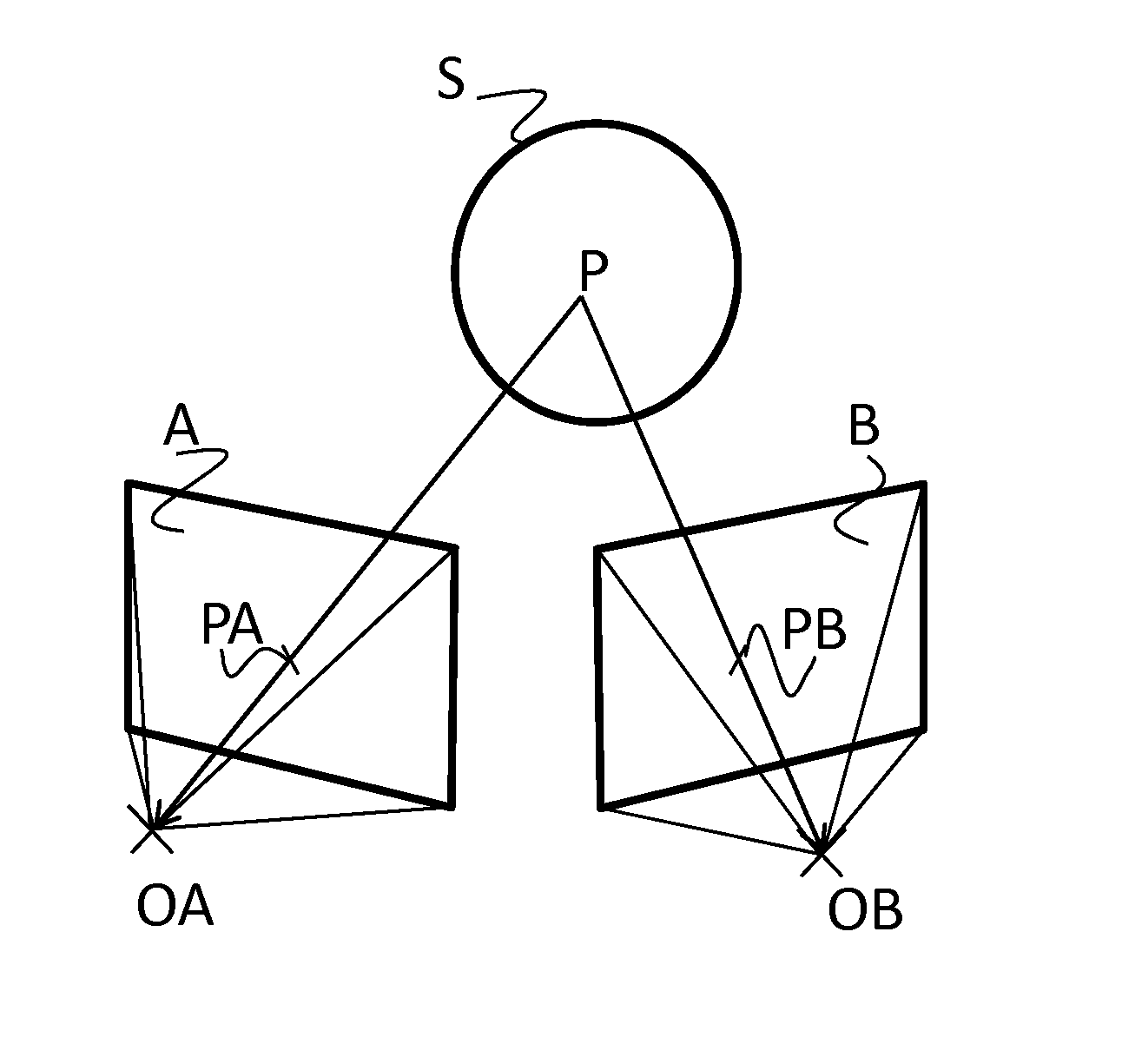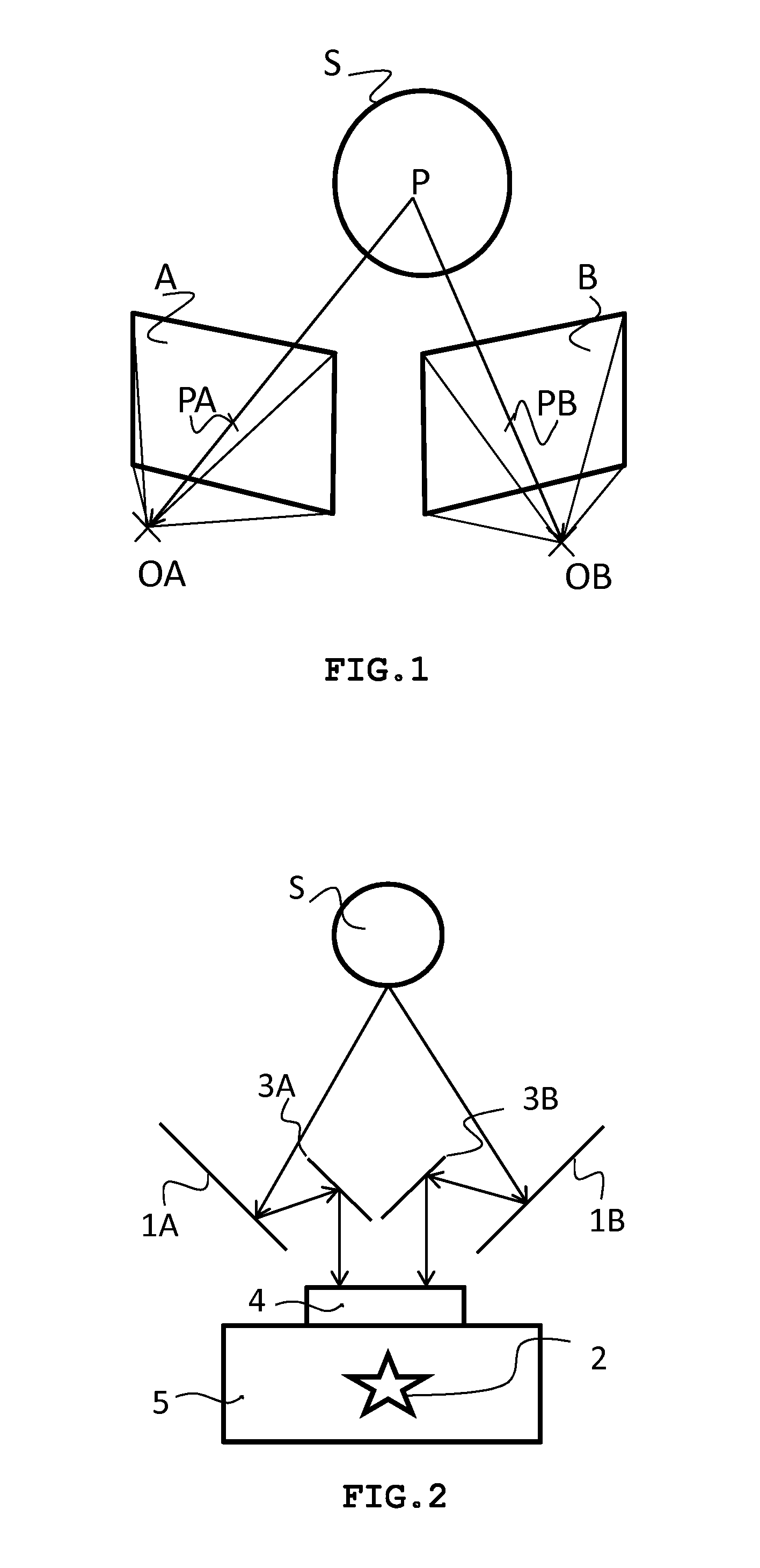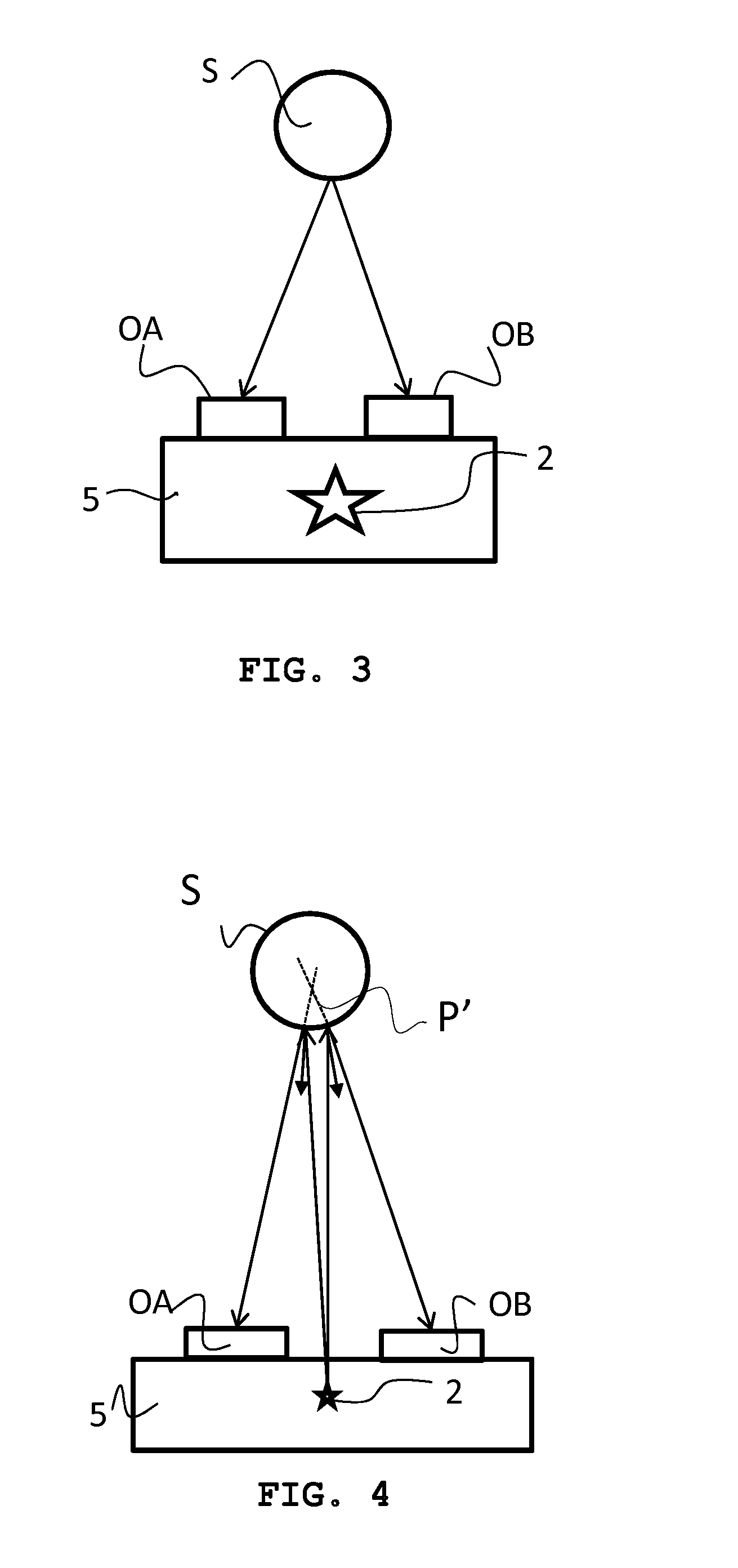Device for the acquisition of a stereoscopy image pair
a stereoscopy and image technology, applied in the field of three-dimensional surface reconstruction from stereoscopy image pairs, can solve the problems of specular reflection creating an issue, blocking light, and one would not be able to see through, and achieve the effect of reducing 3d reconstruction artefacts
- Summary
- Abstract
- Description
- Claims
- Application Information
AI Technical Summary
Benefits of technology
Problems solved by technology
Method used
Image
Examples
Embodiment Construction
[0037]The present invention is presenting a device intended to improve 3D surface reconstruction algorithms for stereophotogrammetry by reducing the reconstruction artefacts due to specular reflections on the subject.
[0038]As an exemplary implementation, it is comprised of a computing unit enabling 3D surface reconstruction by pairing corresponding points between two images of a stereo pair, a photographic camera body with a double optics without polarization and two separated light sources having the same separation distance than the double optics and aligned with the double optics relative to the subject.
[0039]The alignment is such that if the two optics are separated according to a given axis, the alignment between the optical source and the corresponding optics is made according to a line perpendicular to the axis between the two optics. Hence, if the axis between the two optics is horizontal as is the case for human vision, the alignment between each light source and its corres...
PUM
 Login to View More
Login to View More Abstract
Description
Claims
Application Information
 Login to View More
Login to View More - R&D
- Intellectual Property
- Life Sciences
- Materials
- Tech Scout
- Unparalleled Data Quality
- Higher Quality Content
- 60% Fewer Hallucinations
Browse by: Latest US Patents, China's latest patents, Technical Efficacy Thesaurus, Application Domain, Technology Topic, Popular Technical Reports.
© 2025 PatSnap. All rights reserved.Legal|Privacy policy|Modern Slavery Act Transparency Statement|Sitemap|About US| Contact US: help@patsnap.com



